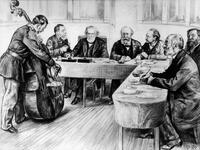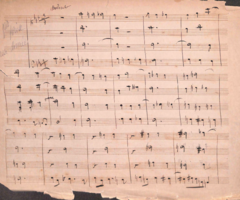
Léo DELIBES
1836 - 1891
Composer, Organist
After receiving a musical education from his mother and uncle, Léo Delibes studied at the Paris Conservatoire under Benoist (organ), Bazin (harmony) and Adam (composition). As a young chorister, he discovered opera when he sang in the premiere of Meyerbeer’s Le Prophète in 1849. He then divided his time between working as an organist and as an accompanist at the Théâtre-Lyrique. His career as a stage composer began in 1856 with several light works, premiered at the Folies-Nouvelles (the first of which was called Deux Sous de charbon), the Bouffes-Parisiens and the Théâtre des Variétés. As chorus master at the Théâtre-Lyrique and at the Paris Opéra, he tried his hand at other genres: opéra-comique (Le Jardinier et son seigneur, 1863) and ballet, with Coppélia ou La Fille aux yeux d’émail, which was first performed at the Opéra in 1870 and has remained one of the most famous scores in this genre. Deciding to devote himself entirely to composition from 1871, Delibes embarked on some larger-scale projects: in addition toSylvia (1876), which consolidated his success as a ballet composer, the operas Le Roi l’a dit (1873), Jean de Nivelle (1880) and above all Lakmé (1883), whose popularity has never waned, are noteworthy. Delibes’s final years were spent as a renowned musician: he became professor of composition at the Conservatoire and was elected to the Institut de France in 1884. Despite his admiration for Wagner, his style, similar to that of Bizet, was firmly rooted in the French tradition of Boieldieu, Hérold and Adam. What sets it apart is its elegance and lightness, the beauty of its vocal lines, and its orchestral colour.
Focus
Focus
La mélodie française
Scientific publications
Publication













